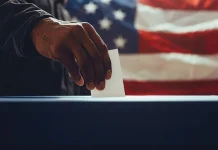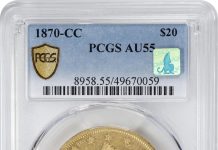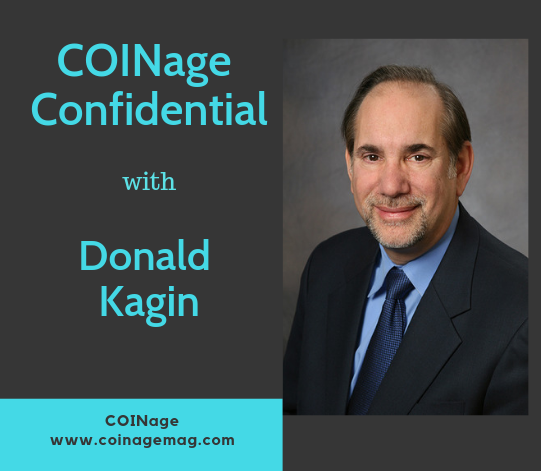
Editor’s Note: “COINage Confidential” is a column that spotlights the movers and shakers in coin collecting and shares their insider views on the hobby.
Donald Kagin, Ph.D is among the trailblazers of numismatics. From his undergraduate years at Northwestern University, where he received the first Bachelor of Arts in Numismatics to his current role as president of Kagin’s, Inc. and Kagin’s Auctions, and a world renowned advisor in numismatics, his knowledge is unparalleled. He is an award-winning author, a member of the American Numismatic Association for more than a half century, and co-founder and board member of the Industry Council for Tangible Assets (ICTA) and the Society of Private and Pioneer Numismatists.
COINage caught up with him to ask 10 intriguing questions.
COINage: What is your favorite area of numismatics, either to collect or invest in?
Donald Kagin: I think anybody who knows me knows that my favorite area is coins of the gold rush, or what we call pioneer or territorial gold coins. These are the coins that were struck by entrepreneurs during the nation’s three gold rushes. People don’t realize that the first one was in southern Appalachia (1828-30) and that coins were privately minted as a result of that, and then California (1848-55), and then the Colorado gold rush (1858-61). Those are my favorite because they tell the most romantic and interesting stories, not only of our coinage, but of our nation and the entrepreneurs who came to the need of a society that needed a medium of exchange by producing coins.
I also like paper currency. They’re beautiful and interesting, with different images and motifs, and I just like the beauty and the history of both colonial and regular federal currency, as well as errors, fractional, encased postage stamps—basically anything that tells a story— I have found no artifact that tells more about a civilization than numismatics. Of course, American numismatics is what I know best, but there are areas from ancient and foreign coins that I also find very interesting.
CA: The hobby and science of numismatics has a graying population, and very few young people are entering the field. What needs to be done to expand and grow the hobby?

DK: I’ve been in this hobby for over 50 years, so it’s interesting that we always say that it’s a graying demographic, but if you look at the demographics of even 30, 40 or 50 years ago, it’s very similar. You have young numismatists, mainly boys who at the age of 17 or 18 discover girls, and we don’t hear from them until they’re in their 30s or whatever, and then many of them come back. So our median age is in the late 50s and 60s, but that’s really been the case for decades.
We always are challenged by how to get more young people involved, especially because, when I was young, you could take coins out of the banks and find different dates and fill the coin books. Today, that’s not possible to any great extent, so maybe we look to the Internet for clues about how we reach the millennials of the world, and young people follow them. I believe that if young people are on a handheld device on the internet, that’s where numismatics should be, and if there’s a way to engage young people in the educational, interesting and fun aspects of numismatics right there, then that’s where our hobby and business should be. So we have to develop ways to get to the young people that way, as well as making changes, perhaps, to our show to make it compelling for young people to attend.
CA: What is the role of the American Numismatic Association, and what it could do to help expand the hobby? Do ANA politics help or hurt the hobby?
I’ve been on the ANA board for over six years now, so this is very personal. I’ve been involved in this issue for some time, and now as vice president of the ANA, so yes, I know that is part of our challenge. I think the ANA really has stepped up and is being very aggressive in outreach to young people on the internet, providing new benefits and services to the numismatic community.
ANA membership in 25,000-strong, and it’s growing—not very quickly, but it’s growing—and I believe it could grow even faster if we offer new ways of delivering numismatic education. That’s our mission at the ANA, and I believe that we are working toward that end to get new, interested people involved, and open up the envelope for people to look at numismatic education in a different way.
CA: What is the future of coin shows and conventions? What makes the FUN show so perennially successful, while other shows are on the verge of obsolescence?
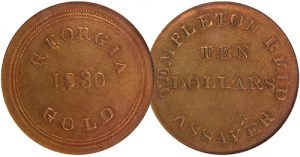
DK: The FUN organization—the people, the membership, and especially the people who run the show—have done a marvelous job over the last several decades to really promote this particular show. They’ve provided the type of venues and services that encourage the dealers to come and set up, so you get people coming from all over the world—not just the United States—to set up here, not only because of the time of the year, which certainly helps, because it’s the middle of the winter and we’re in Florida, but also because they’ve done such a great job of providing numismatic education and information and bringing the dealers and the collectors together. I think Florida is the second or third largest per capita state for the hobby of numismatics, but we get a lot of people from all over the country, as well as people from Europe and Asia, to come here. They’ve done a great job of providing what people need, both from a collector and dealer standpoint.
I think shows will continue. I think they will even grow, with more use of the internet, perhaps, but I think the market has a lot to do with it. I think the economy is growing now, we’ve turned a corner. I think things are more robust than they have been in years, and you’ll see that manifested in more coin shows and bigger shows.
CA: How would a cashless world affect coin and banknote collecting?
DK: Well, I think we’re in a more and more cashless society today, and yet the visceral aspects of touching and seeing a coin and dealing with that go far beyond the convenience of just financially using money. Coins are not just money, they’re artifacts, they’re stories, they’re history in your hand, so it’s not a good analogy to say, “Oh, we’re cashless, therefore we don’t need coins.” Somebody like George Washington or Alexander the Great could have held this coin, you know? You don’t get that from a debit card.
I don’t care how big the cashless society gets—although it’s convenient for the financial markets and commerce—but coins are collectible and an artifact, and that’s what we concentrate on. I don’t see that diminishing because we are having less cash in our system.
CA: What would be the impact on the coin market of gold at $10,000 per ounce? What would $500 per ounce gold do to coin collecting and investing?
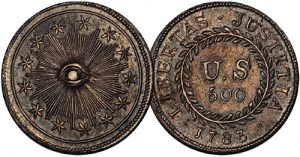
DK: I don’t think either of those prospects is in the cards for some years. Gold has retained its purchasing value of what it could buy 5, 10, 50, even 2,000 years ago. There are few other commodities that can point to that track record, so gold’s going to continue to hold its value. While we’ve just had a resurgence of value in gold, I don’t see the prospects of getting to $2,000 gold—let alone $10,000 gold—in the next few years. But inevitably, we will get to $2,000 gold or more, and it will certainly have a positive impact on our business, because that means the dollar’s cheaper and worth less, and gold is worth more, and that will reflect on the coin market—it always has.
Things move in cycles. The coin market in general has been down since 2008. The gold market has been up and down, and gold has been trading the last year or two within $100 an ounce, so when it starts to go up, it will be probably inflation-driven—and that looks like it’s on the horizon—and that will positively impact the rare coin market.
CA: Has Bitcoin become the new gold coin and funneled billions of dollars from the coin marketplace?
DK: The answer actually, on a temporary basis, is “yes”. You have a lot of people who are speculators, private people who do buy gold and hard assets, and Bitcoin is, for the moment, an area of speculation and an area of privacy.
Cryptocurrency has siphoned off some of that money, and is part of the reason gold has been as low as it’s been, but I believe that, as the speculation dies down and Bitcoin and cryptocurrency in general crash to a certain extent, you will see a corresponding increase in an interest in precious metals once again.
CA: What impact have the grading services had on coin collecting and investing?
DK: I think it’s had a lot of positive impact. The ANA was the first to come up with the independent grading of coins as a solution to the grading problem that we had, in which everybody graded coins a little bit differently. That evolved with the advent of PCGS in 1986 and the NGC a year later, and other grading institutions that have tried to fashion a grading system so everybody is using the same criteria for the same grade. Adopting the 70-point grading scale was important to that, and now you have in-between grading, where coins are independently verified to be solid or high end for that particular grade.
I think this has all evolved well, so that people are comfortable with buying coins. One of the ideas was to be able to buy coins sight unseen to a certain extent, and maybe you can do that for generic coins or seminumismatic coins, but ultimately most coin dealers and collectors want to see the coins. It’s good that we have a system that most of us can agree on, and people can buy and sell based on that system.
It makes coins somewhat fungible when, for example, one St. Gaudens $20 common date is in a 65 holder, another one in the same holder is worth about the same. If we want to get Wall Street investment people involved in coins, we have to have a standardized grading system, and that’s in part is this was all about. Now, you still have subjectivity involved. You can’t have a computer—although that was tried once—that can grade coins. Thank goodness! But the system has been standardized to a certain extent, so it has evolved, I think, in a very positive way, and it’s still evolving.
CA: How would an internet tax affect coin sales?
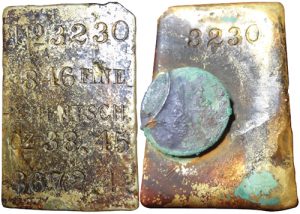
DK: I’m not sure. I don’t think it will be positive, but I don’t know what you mean, in terms of what kind of tax, how it would be enforced, what’s involved here. It’s all theoretical right now. Any kind of tax on numismatics doesn’t sound like it’s going to be positive for the industry, so let’s try to avoid that and not have to deal with that issue in the future. That’s why we have a lobbying group, which we started in 1981, that’s evolved into the Industry Council for Tangible Assets (ICTA).
ICTA is involved in lobbying efforts to educate state, local and federal government about coins and how different legislation, as well as taxation, might affect our industry and their economy. So we’ve done a very good job, and we will continue to do a good job as ICTA evolves and helps in those areas.
CA: Does the United States Mint help or hurt the rare coin marketplace?
DK: We probably couldn’t exist without the United States Mint and Bureau of Engraving and Printing—obviously, they’re the ones who make our coins and currency—unless you’re talking about some tokens and private issues, of course. But overall, they help in the marketing and storytelling and education part.
I take issue with some of the issues that they make or the number that they make, but I think, in general, they add to the educational aspect and get new people interested in our hobby.



